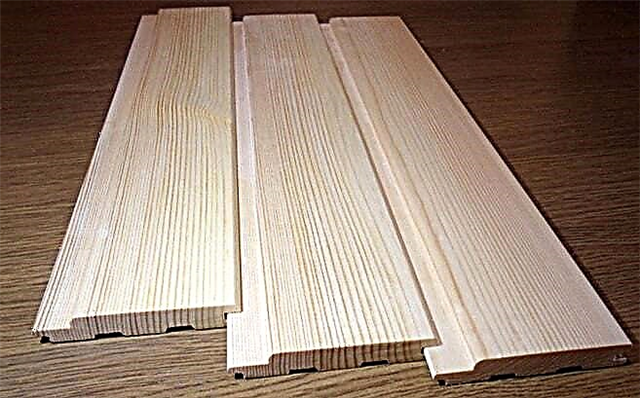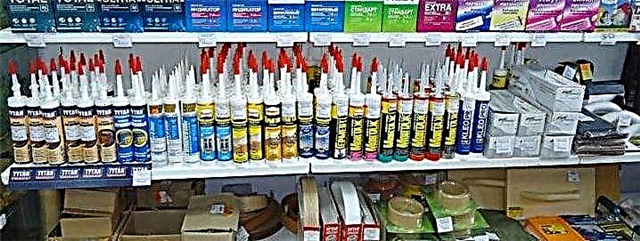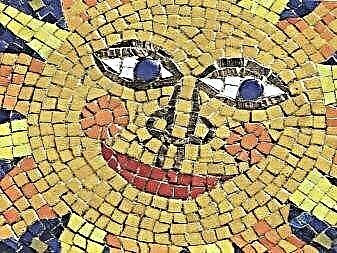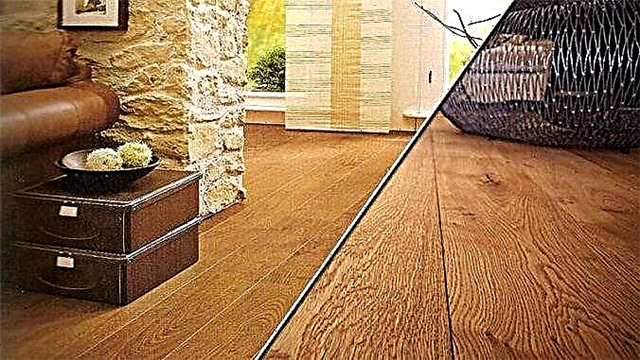
It’s not easy to choose which is better, between a laminate and a parquet board. The many pros and cons of many buyers are confusing. But if ecological safety and naturalness are paramount when buying a finish for a floor, they usually take solid wood slats. And if you need cheap and practical material, then the choice is often made in favor of a laminated coating based on MDF. However, not all so simple. Before you go to the store, you should carefully study both options from all sides.
What is the difference between a board and a laminate
Externally considered topcoats are similar. Their installation is also carried out according to a similar technology, due to the "tongue-and-groove" locks available at the end.
However, the top layer of the laminate is made of acrylic and melamine resins. And the parquet board from above is made of hardwood, which is varnished. In this case, both options are a factory product completely ready for laying on the floor. To process and varnish them after is not required.
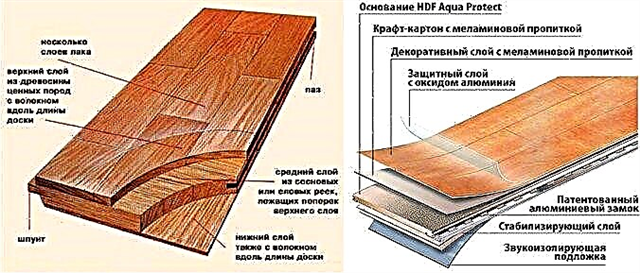
Design features of the laminate and floorboard
Another important difference between a parquet board and a laminate is the middle bearing layer. In the first case, it is made of bars of solid wood, and in the second of MDF. If we compare the finishes in strength, durability and wear resistance, then a high-quality laminated coating of class "33" or "34" at the factory floor in the form of multi-layer dies will win by a significant margin.
Advantages and disadvantages of the laminate
Among the advantages of a laminate are:
- good resistance to moisture,
- environmental Safety,
- high abrasion and scratch resistance,
- increased furniture punching strength,
- simplicity and unpretentiousness in leaving,
- UV resistance
- variety of drawings and colors.
Like a parquet board, a high-quality laminated coating does not emit harmful substances. And if it has a top layer made by antistatic technology, then dust will not stick to it. This is the best solution for children and living rooms.
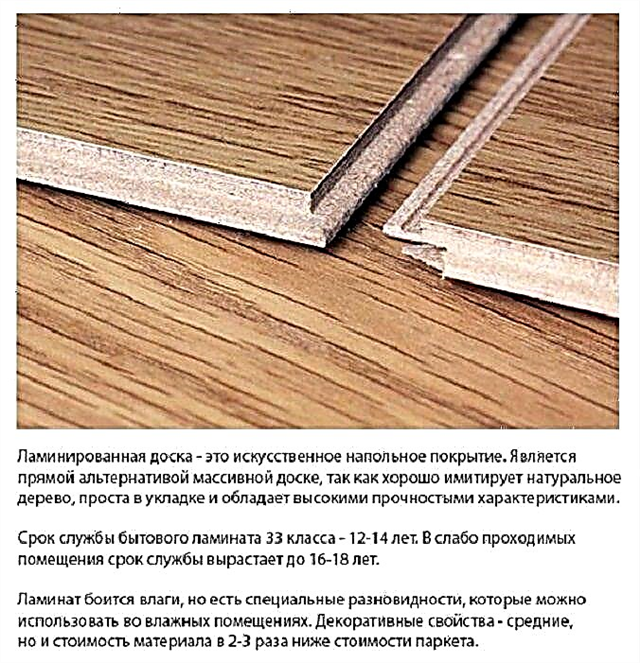
The main disadvantage of the laminate is artificiality. Upon entering the room with him, it is immediately evident that under the feet there is a coating of artificial material. And, despite all the protection from melamine and acrylic, if the water gets to the MDF, then the laminated lamella will inevitably swell and become unusable.
Pros and cons of flooring
A parquet board has the following advantages:
- naturalness and naturalness of the material,
- aesthetic appearance
- antistatic coating of varnish,
- increased sound insulation,
- simplicity of laying without the need for hinging and varnishing.
In comparison with laminated flooring, parquet is more demanding on the microclimate in the room. High humidity and constant temperature drops are contraindicated. Also, parquet varnish is less durable and wear-resistant than the melamine protective layer. In rooms with high traffic it is best to lay laminate lamellas.

The advantages of flooring
Laminate and parquet board - description
Laminate and parquet board are a modern solution for the improvement of the apartment. According to the principle of flooring, the materials are identical. The assembly is carried out by putting one bar into another at a certain angle. They are held together by a protrusion on the lock connection.
Imagine ordinary shoes. When shoeing, insert the foot at an angle inside the boot and lower it. In this position, the back holds the foot so that it does not fall out. This is how the dies of the floor covering are interlocked.
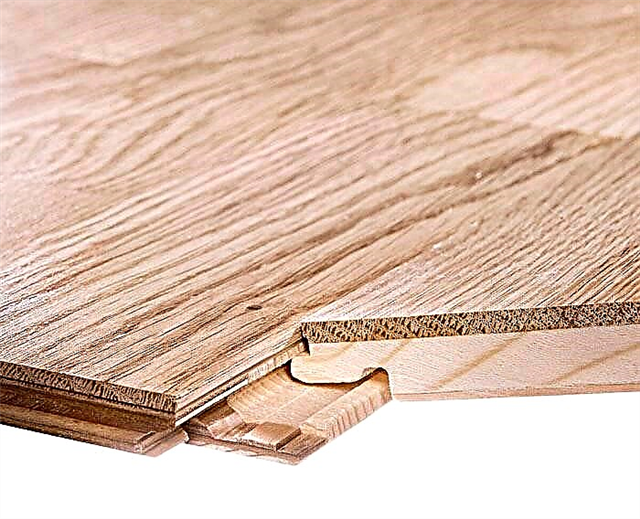
Laminate represents a three-layer composite design.
The upper part - (combined) consists of a decorative and protective transparent layer of melamine resin. This is what we are used to seeing.
The middle part is a high density wood-fiber board (HDF). It serves as the basis without which assembly and further operation cannot occur.
The bottom layer is stabilization. You can do without it. But all laminated panels would be crooked. Once I laid such a laminate at 150 rubles per m2, bought in OBI.
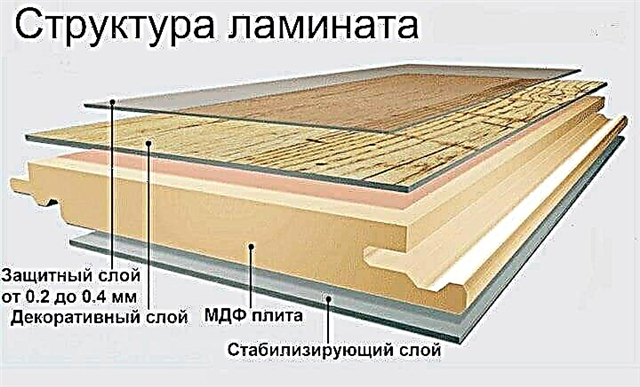
But in truth, due to improper storage or transportation - defects associated with uneven panels in the laminated material are quite common.
Parquet board - consists of several layers.
Top layer - consists of valuable wood covered with varnish or oil, which protects the surface and gives a certain strength.
Middle layer - contains wood in the structure, located across the plots of the upper part. This is necessary for better stabilization of the parquet and is associated with the physical properties of the tree.
The bottom layer is glued thick veneer. It is necessary for bonding together the entire structure by gluing. Without it, the pine plots will crumble and the board will fall apart.
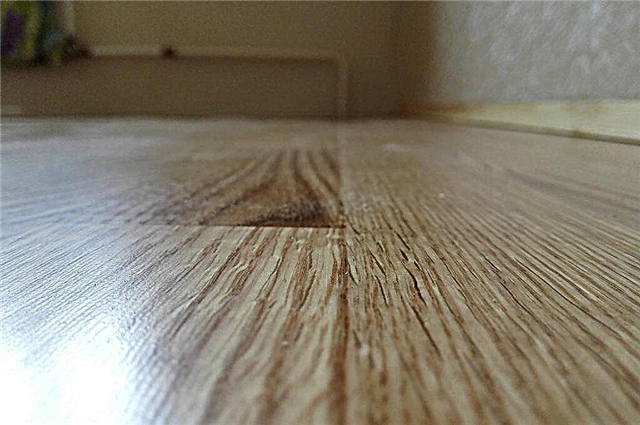
Comparison of hardness of materials: laminate and parquet board
Laminate - consists of recycled compressed sawdust. Not to be confused with chips like chipboard, but mChristmas tree dispersial fRacia or MDF. However, this is an abbreviation adapted to the Russian language. If you deeply understand the issue, then the laminate still uses HDF - the first word (high) - high density.
In general, a wood board has a high density, from 830–970 kg / m3. This homogeneous composite of considerable hardness is the basis for a decorative coating. Depending on the density of HDF, the laminate is assigned a class of operation. The higher the specific gravity, which means hardness, the higher the class. It can be 31, 32, 33 or even 34 classes.
By the way, Chinese partners take advantage of this and add various additives to the laminate that add weight, but do not affect hardness. They manipulate some intricacies in the classification of strength. Therefore, very often on a laminated coating from China, the wear resistance class is written 34.
People, implying that they receive high hardness material, are deeply mistaken. And after that, fundamentally make the wrong conclusions about the strength of the laminate as a whole.
High density affects the stability of the locking joints, as well as the burstability of the floor ... from the legs of a heavy sofa, for example.

In addition to the hardness of the HDF board, the top layer of the laminate is important. It affects scratch resistance. On top of the decorated top layer integrate protective elements - melamine resin. But recently, to give the coating a different look and tactile feel, anti-slip protective composites consisting of aluminum oxide and other materials have been added.
Parquet board - as already mentioned above, a structure consisting of several layers of wood. For example, take the oak version. Firstly, this material is one of the most affordable, secondly - it is popular, beautiful and suitable for classic types of interior solutions, thirdly, oak is less hydrospecific and therefore less prone to deformation from moisture differences than ash or, especially, beech . So, less likely is the detachment of valuable lamellas.
Oak - has a high density, about 750 kg / m3. Hardness is measured by the Brinnel method. If to tell briefly ... A metal ball is pressed into a tree under a certain pressure. And according to the result of a dent, wood is assigned a value in digital equivalent. In the material oak, it is equal to a high of 3.7 to 4.2. Brinell hardness may depend on where the tree grows.
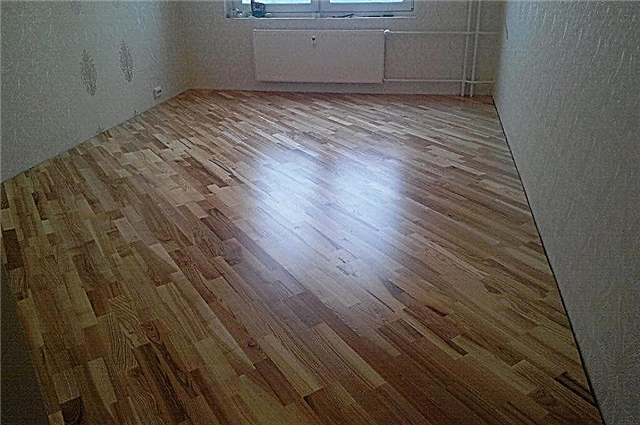
But it should be noted that natural wood is not homogeneous, like a laminate panel. Therefore, in different parts of the tree, hardness can vary.
The final layer on the parquet flooring is varnish or oil. They protect the wood from external environmental influences, gives strength, an external gloss.
Varnish may vary. On an industrial scale parquet board, varnish is used, which is dried under ultraviolet light. The drying system is designed in such a way that the beginning of drying takes place from the bottom layer. Therefore, the coating on the floorboard is of high quality and has a relatively high strength.
However, to preserve the texture of wood, the layers of varnish should not be thick. Like Soviet parquet, covered with pentaphthalic varnish PF. Therefore, varnish can not give the hardness that is inherent in laminated floors. In addition, the structure of the tree is heterogeneous and has less strength, leading to faster punching from the claws of large animals, the movement of furniture and games of children.
Honestly, on an inexpensive parquet board without brushing, varnished, the coating along the fibers can be pressed with a fingernail, with some effort.
Output:
In terms of hardness and wear resistance, a laminate is definitely better than a parquet board.
Comparison of laminate and parquet board for comfort
What is comfort? Cleanliness, order, silence, comfort - developing into a feeling of warmth of the hearth. Returning from work, I want to escape from the hustle and bustle and get into the relaxation area of the physical and mental.
Any acquired piece of furniture, which includes flooring, will bring joy from the novelty. But let's move from mental delight to the actual criteria and ask: which is better - a parquet board or a laminate for comfort?
Warm and tactile sensations of the laminate and parquet board
A parquet board has noticeably less heat loss compared to a laminate. This is explained by the lower density and high porosity of the tree. Roughly speaking, the laminate heats up faster in the summer from the sun, but also cools faster in the cold season. If there are drafts, keeps the floor temperature in the lower register due to cold air flows. The heat loss laminate is located approximately in the middle between the tiles and the parquet. Therefore, the thermal effect of the board is comfortable for human feet.
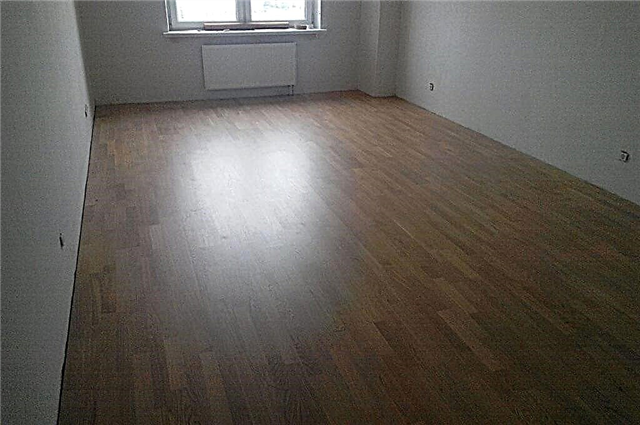
Environmentally friendly material: laminate and parquet board
In terms of environmental friendliness, I would not give much preference to any material. Nominally the parquet board is cleaner, it does not use various resins included in the adhesive composition in the manufacture of wood boards.
However, I have never heard that from a laminated coating people had an ailment or something else. Although during the work I met with the argument that the children are allergic, therefore they lay a more environmentally friendly parquet board, thus being insured against the aggravation of the disease. But at the same time, materials are used in the decoration, some of which I would refer to a conditionally more harmful category of goods.
In fairness, it is worth saying that when finishing parquet panels varnishes are used - a subject of the chemical industry. I heard stories that wood can contain lead if it grows in the area where heavy industrial plants are located. But this is more of a myth. If you are afraid of everything, then you can not buy anything at all and live in the taiga.
Laminate of European brands, including branches located in Russia and Belarus, is part of the EPLF Association of European Manufacturers and belongs to the highest category of environmental friendliness of the material and is indicated by the E1 sign. The HDF board used in the products of Russian manufacturers complies with GOST, as reported on the package or in the insert.
Questions remain for the environmental friendliness class of Chinese laminate manufacturers. The products of which are not included in the EPLF mentioned above, nor are marked with the Russian quality mark.
Sound insulation and sound absorption of the laminate and parquet board
The question is more complicated than it seems at first glance. Speaking about the soundproofing of materials, we generalize the concepts, imagining that using this or that composite we will get a certain silence in the apartment ...
I read an article on the issue of sound insulation, combined with my experience and observations, and here are the conclusions.
There are concepts: sound or sound insulation of materials and sound or sound absorption of materials. Also noises subdivided into percussion and sound. They can be of different lengths, frequencies. Porous materials have better absorption and dispersion of impact noise, while solid materials better prevent sound penetration.
When flooring, we are interested in isolation from the neighbors from below and so that the floor is not as loud as a drum.
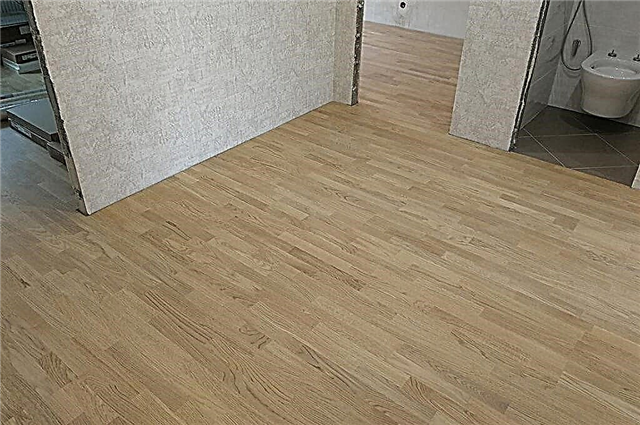
Overlapping from the neighbors is a concrete slab with good sound insulation, but low sound absorption. That is, the reinforced concrete slab does not delay shock sounds. Therefore, the sound of a perforator crushing a wall is clearly audible. The shock wave can be absorbed and reduced when intermediate layers of other materials are used in the construction of the overlap. But here an integrated approach to isolation, including wall partitions through which impact noise is transmitted, is important.
Therefore, we conclude that: if there is a difference in sound insulation between the laminate and the parquet board laid on the ceiling through the substrate, then it is so insignificant that it can be neglected.
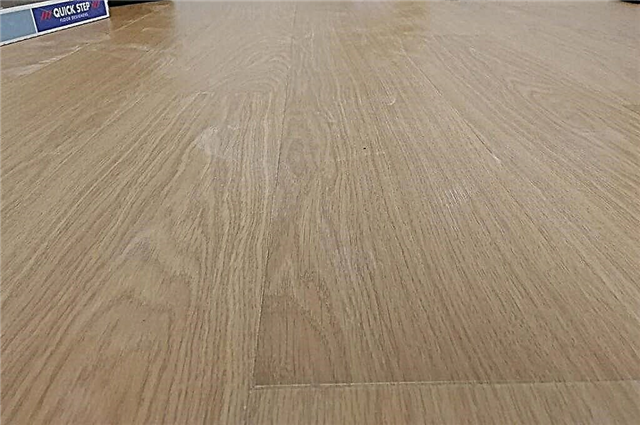
As for the noise generated indoors when operating a parquet board or laminate, several factors also affect this.
- The parquet board absorbs noise a little better due to the greater porosity and multi-layering of the composite, so it is less dense than the laminate.
- A tighter fit to the substrate provides better dispersion of impact noise. Sound energy is immediately transferred to the substrate and is extinguished in it. Therefore, a heavy 12 mm laminate may be less sonorous than an 8 mm thick panel.
- Smooth base implies a closer fit of the material to the substrate.
- The presence of furniture helps to absorb sound noise and eliminates the echo effect.
As you can see, under the general concept of sound insulation between the compared samples, there is practically no difference. Other factors affect sound insulation more.
Output:
Parquet board in terms of comfort surpasses laminate floors.
Care and restoration of a parquet board and a laminate
Laminate and parquet boards are similar in care. It’s hard to say anything new here. All people wash floors and these types of coatings are not much different. The only thing is that in both cases wet cleaning is best done with a well-wrung rag.
It is not recommended to add aggressive cleaning agents to the water, especially on a parquet board. But my wife did not read this article, therefore, if she considers it necessary to wipe the laminate with a weak chlorine solution for disinfection, it does so. In general, I am calm about such harsh cleaning methods.
It is more difficult to maintain the necessary humidity in the apartment. If the laminate rarely creaks in a dry room, then the parquet board more often reminds of itself. I’m not even 100% sure that it crunches precisely from the lack of the required humidity during operation. I suppose, often, the situation is bad with the proper drying of wood in production or a violation of manufacturing technology. Interestingly, most often these suffer from a fairly good Tarkett, aka Sinteros.
Therefore, to maintain relative humidity, sellers and manufacturers recommend installing humidifiers.
To restore the laminate, I receive periodic calls. But I make repairs very rarely. Even if there are replacement panels, after some time, the coating must be replaced with a preliminary inspection of the floor. Over time, the locking joint gains moisture and changes shape. And often new planks are hardly inserted into the old ones and the lock breaks. You understand, the fact that a quality replacement is small, and the time, nerves will be spent.
Therefore, post-warranty repairs I produce only our orders.
Chips on the laminate and parquet board can be eliminated by applying sealant of various colors.
An inexpensive parquet board without brushing quickly becomes scratched. Some sources write that it cannot be looped. But the fact is that modern machines are grinding, not drum, as in the film "Operation Y." And it is possible to restore by polishing the shield parquet, though the varnish coating will be of a different quality. On this issue, it is better to contact the local masters of parquet in your city.
Output:Laminate flooring and parquet board is not restored in all cases, but it is possible. But it’s hard to find a master for such a job.
Laminate and parquet board - price comparison
Parquet board
The price of a parquet board starts from about 1000 rubles / m2. This is the Ukrainian-made Barlinek parquet with the powerful, but extremely uncomfortable Barklik castle. Laying masters try to avoid this brand or charge a higher price for flooring. The product can also be found under the name "Real Wood", "Diana Forest" and is sometimes labeled as a production in Poland or the EU. It is sold mainly by large trading networks, due to its low price and low trading margin.
Also, the relatively low cost of the PolarWood parquet board is the manufacturer Karelia-Upoflor. The lineup contains a large number of finishing materials and various shade options. The price of the board starts at about 1,400 rubles per m2. It is pleasant to work with Polarwood; it is of high quality.
Specialty stores do not like to sell this product, arguing that the board is of low grade. Although they keep it in stock.
At a price of 1000-1500 rubles / per m2, there is a three-lane parquet board for sale with simple lacquer finish without brushing. Such parquet loses its appearance faster due to a semi-glossy surface on which scratches and dents are visible.

In my opinion, a more interesting option with brushing.
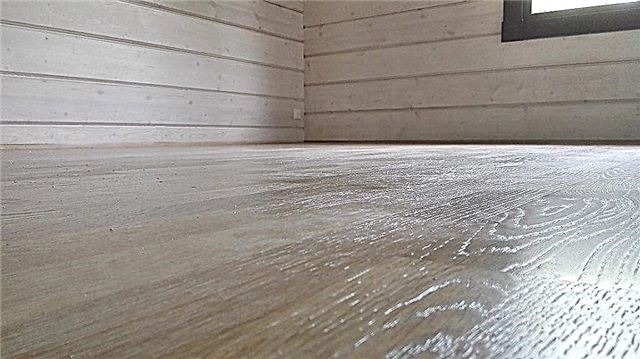
Brushing is the process of finishing wood. Soft brushes are selected using brushes with a pile on the work surface. Thus, a kind of embossing with a repetition of the pattern of fibers is obtained. Most often used on oak wood.
Parquet board is three-lane and single-lane. The more expensive single-lane option starts at 2500 rubles per square meter. True, for such a price you can buy only a small format option.
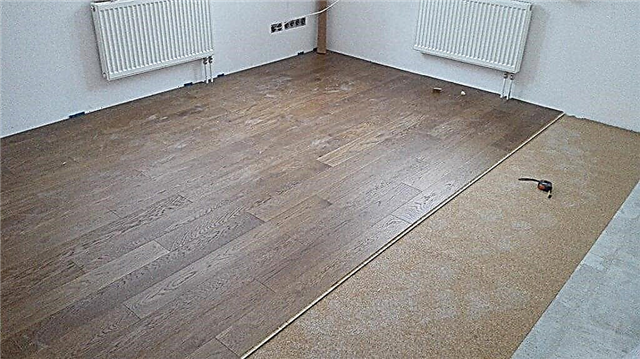
For the full-size format of a single-lane parquet, you will have to pay about 3,500 rubles per square meter and above.
Laminate
Laminate starts at a price of 150-200 rubles per m2 and ends with a cost of about 3000 rubles.
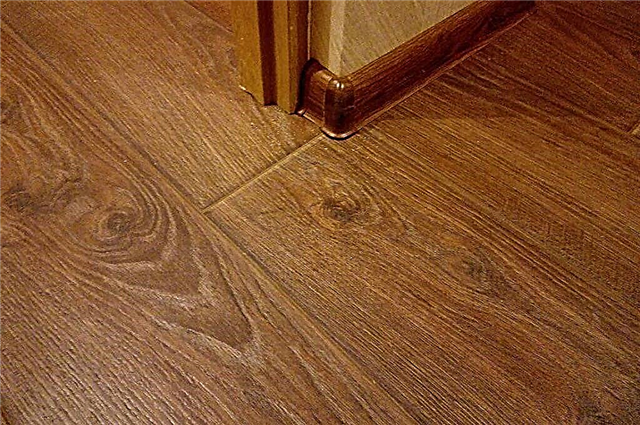
Immediately go to the laminate for 1000 rubles, comparing with a similar parquet board. For this price you can buy a laminate floor with a deep relief and a high class of wear resistance. Such a coating will tactilely be on par with parquet, winning in relief, but inferior in heat transfer. Laminated panels will benefit in both strength and durability.
Comparison table for laminate and parquet board - pros and cons
| Strength | Comfort | Price | Restoration | |
| Laminate | + | — | + | = |
| Parquet board | — | + | — | = |
Epilogue
Would I like to install a parquet board? Maybe yes! Imagine a large apartment or a country house. Oak staircase, installed doors from solid oak. And to top it all off, at least a parquet single-lane board, always with a brush and aged. And better - from a solid array.
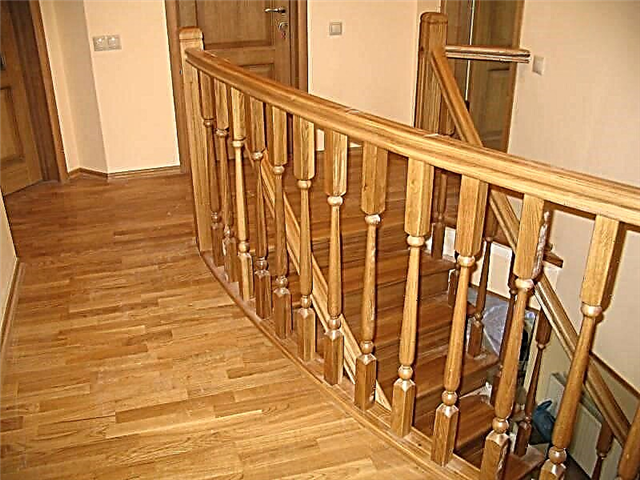
But I am a rational person, with a working rhythm of life. Unfortunately, there is no time to enjoy the delights of parquet. There are roll-out sofas that can ruin the cover. Therefore, I am not going to lay a parquet board. I had a cork floor, which the legs of the sofa pushed through.
Someone is categorical when choosing and will say: I don’t care that the parquet is forced! An array is an array. And he will be right in his own way. In the end, people would not buy Mercedes and iPhones then. Therefore, what is better - a laminate or a parquet board is definitely not to say.
The basics
Laminate is a multi-layer synthetic floor covering designed to simulate natural wood. The main layer of the laminate is made of melamine resin and fibrous hdf-plate. The top layer includes printed wood fiber paper.
Parquet board consists of several layers of wood and (or) plywood. The middle layer is perpendicularly laid boards of coniferous or birch wood. The bottom layer is usually birch plywood. The top layer is usually a solid cut of valuable wood of small thickness (from 0.7 to 4 mm). Most often it is tinted and processed in the factory: coated with varnish or oil.
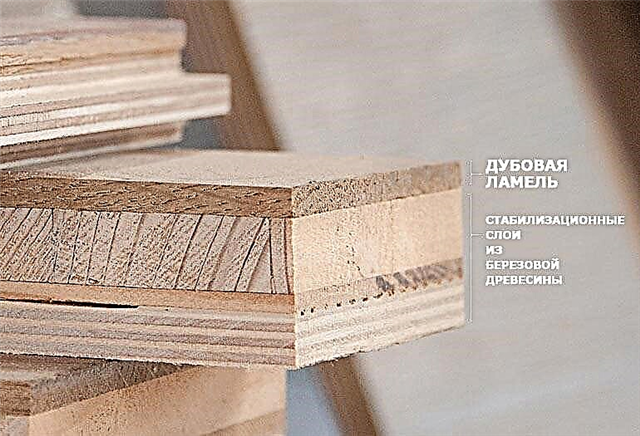
Atypical “pie” parquet board. Most often, a parquet board consists of 3 layers
A massive board is a completely cut piece of oak or other wood, processed or left without treatment.
In essence, parquet and massive board is a wood product with a natural texture and wood properties, and a laminate is just an imitation of a wooden floor. And although some samples of high-quality laminate are practically indistinguishable from parquet, there are much more differences between them than the eye notices.
Appearance and aesthetics
Natural wood has a huge range of texture variations, so there are no two identical planks of the same model, be it massive or parquet.
Pre-designed patterns are imprinted on the laminate to simulate the look of a natural tree, so the same pattern is repeated on average every 5 boards.
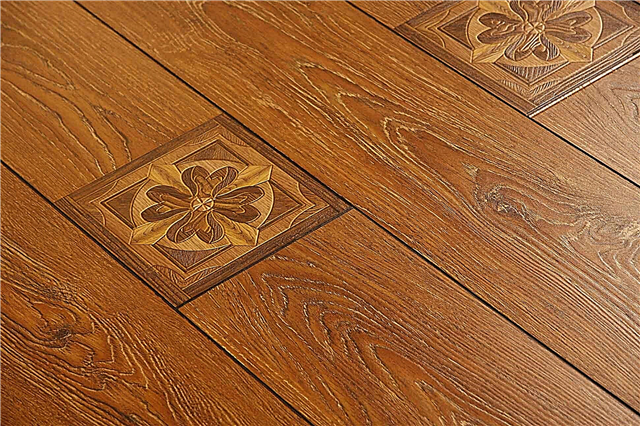
Laminate perfectly imitates wood, but each plank cannot be unique
And although some laminate samples look very dignified, the naturalness of wood cannot be reproduced.
Strength
The durability of any flooring largely depends on the intensity of movement on it and compliance with the manufacturer's requirements for its use and care.
The outer layer of most types of laminate is made from melamine resin and aluminum dioxide at high temperature and extreme pressure. The resulting surface is often harder than natural wood.
Most types of laminate are also resistant to moisture and fading. Therefore, many respected manufacturers of laminated flooring give a guarantee for coverage of 10 to 25 years.
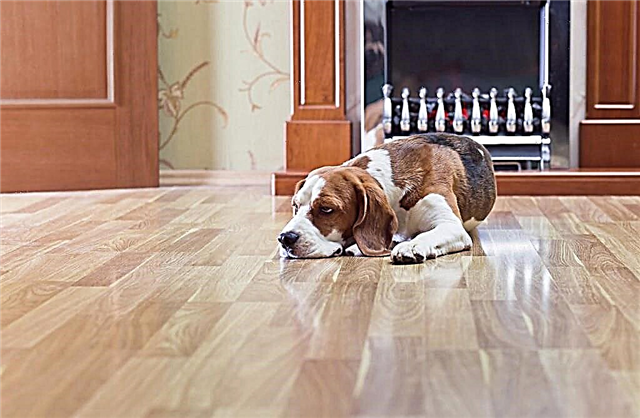
Laminate is reliably protected from scratches, so pet owners often choose it
The durability of natural parquet depends on the quality of processing, manufacturing and maintenance. Wood is softer than the composite laminate surface, making it easier to push through.
But the floor from the parquet and massive boards is easier to repair, often without replacing individual boards or even the entire coating, as is the case with a damaged laminate. For example, in case of damage to the oil-covered parquet, it can be repaired by manually polishing the affected area, and then simply cover this area with a new layer of parquet oil.
On some types of parquet floors, such as brushed oil-coated parquet, small surface dents and scratches easily mix with the existing look, emphasizing the unique appearance and depth of the wood texture. If the laminate is scratched or cut, it is immediately visible and affects its functionality.
Parquet board: natural wood heat
Parquet board replaced the classic piece parquet from solid wood. It is a structure that successfully combines hard and softer wood species, giving it flexibility and strength. Better than others, a three-layer parquet board has proved itself, having the following form:
- the bottom layer is a stabilizing plywood layer, a thickness of 1.5 to 2 mm,
- middle layer - narrow planks of softwood softwood or rubber wood 8–9 mm thick, located perpendicular to the upper layer,
- the top is a durable wear-resistant layer of hardwood, the thickness varies from 0.5 to 6 mm.
The total thickness of the board can reach 25 mm. On top of the parquet board is covered with several layers of protective varnish.
Particularly noteworthy is the Barlinek floorboard. The manufacturer uses only natural wood, groomed in three layers, no plywood or MDF. BARCLICK locks are used along the long edge and at the end of the lock Barlock 5Gc, which allow styling without glue and special tools. Can be laid on a warm floor!

Advantages and disadvantages of parquet
Like any material, parquet flooring has its pros and cons, which must be taken into account when choosing.
Pluses of a parquet board:
- The naturalness of the material. The wooden floor makes the room warm, cozy and lively, the natural, non-repeating pattern of wood is mesmerizing.
- The possibility of restoration work. The front layer of the board, depending on the thickness, can withstand from 1 to 3 grinding cycles and, if necessary, is covered with a new layer of varnish.
- Long service life - at least 15 years with proper care.
- Relative simplicity of leaving - rather standard wet cleaning and regular use of special polishes is enough.
- Easy styling. The lock connection makes it easy to lay and dismantle individual elements.
- Antistatic. Varnish does not attract dust, hair and animal hair.
- Unlike piece parquet, a parquet board does not need to be looped and sanded after laying, they have a factory coating or impregnation.
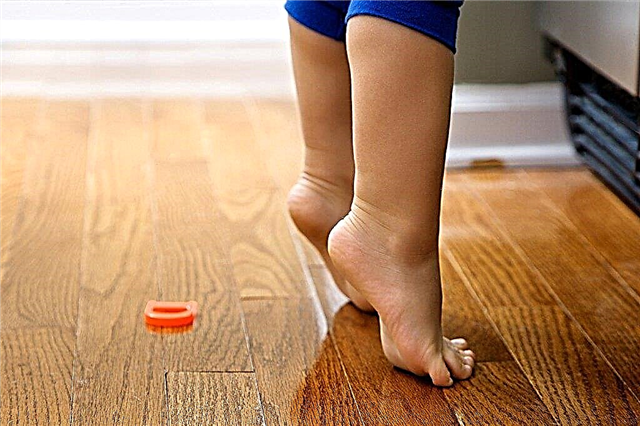
Minuses:
- Wood is subject to mechanical damage: deformation, dents, scratches. Strength differs depending on the type of wood used in the top layer.
- There is a chance of delamination.
- Increased demands on the surface of the base - it must be clean and perfectly aligned.
- Afraid of temperature and humidity extremes.
- Do not use chemical cleaners.
- When laying without gluing, gaps may form between the boards over time.
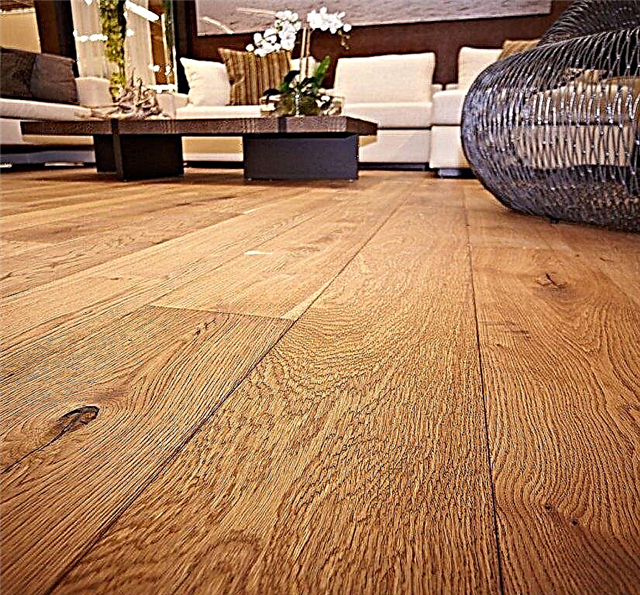
Laminate: versatility and practicality
Laminate is a modern industrial product consisting of different materials arranged in layers.
- The bottom layer is protective, made of impregnated paper or thin plastic.
- The middle layer - the carrier, is a fiberboard or chipboard plate, characterized by increased strength.
- The front layer is the foil or film on which the image is applied. It can be an imitation of wood, granite, tile, carpet and other materials. The most popular textures that imitate the laminate: oak, maple, walnut cherry and other valuable species of wood.
- Top layer - protective - melamine resin.
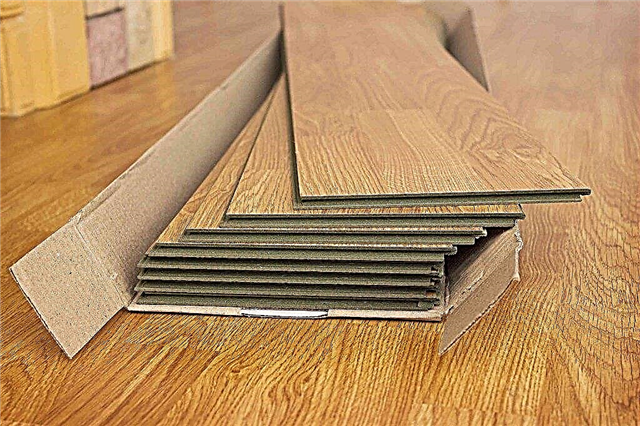
The edges of the laminate are usually treated with a wax repellent.
Laminate is divided into classes according to the wear resistance parameter from 21 to 34. The higher the class, the greater the allowable load on the coating and its service life, which can reach 15 and even 20 years.
Tip: for an apartment, a class 32 product with corundum in the upper protective layer (a substance that provides high scratch resistance) is best suited. The lower class is not durable, material 33 and 34 class unreasonably expensive.
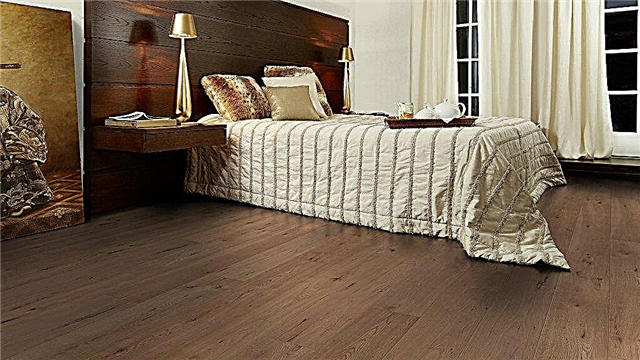
Pros and Cons of Laminate Flooring
It is important to keep in mind that all the advantages that this coating can have are only for a high-quality product, the manufacturer of which is part of the EPLF association. Poor quality products, which can be sold both at a low price and under the guise of high-class material, have one solid drawbacks and form a negative public opinion about this type of coverage.
Benefits:
- high strength and resistance to damage (chips, scratches, dents) and abrasion,
- good moisture resistance with high-quality installation, which eliminates the presence of gaps between the elements,
- safety - despite all its artificiality, a certified laminate does not emit harmful substances,
- resistance to high temperatures and ultraviolet,
- simplicity of laying due to the special technology of fasteners - “click-system”.
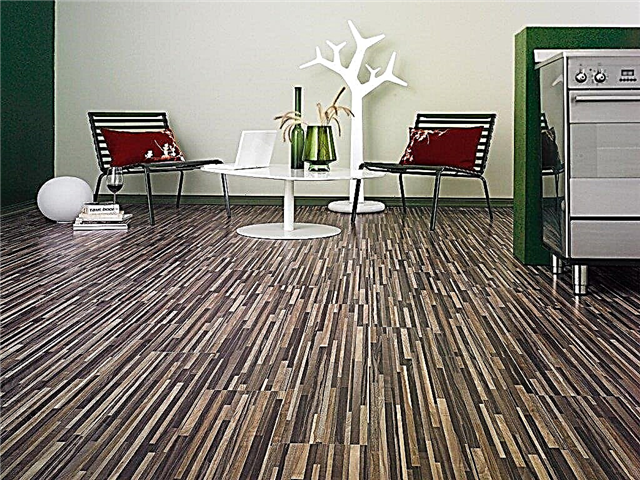
Laminate disadvantages:
- the main difference between a laminate and a parquet board, which can be attributed to its disadvantages, is its naturalness,
- the edges of the plates are the weak point of the product and may delaminate over time,
- not subject to restoration and repair,
- the material is distinguished by high noise and softness,
- static, attracts dust, cold to the touch.
Tip: the softness and noise of the coating can be significantly reduced if you put it on a high-quality floor and cork substrate.
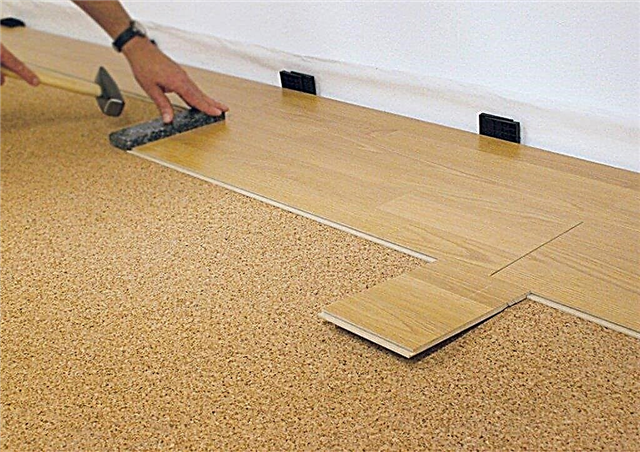
Cork laminate
A novelty in the world of finishing - cork laminate, combines the qualities of parquet and laminated flooring and even surpasses them in some respects.
Cork coating, like a laminate or parquet board, consists of several layers:
- pressed cork chips substrates,
- bases from a moisture-resistant HDF plate with grooves and spikes for laying,
- sound and heat insulating layer of pressed cork,
- veneer balsa wood or other types of wood,
- a layer of high-strength varnish or vinyl film.
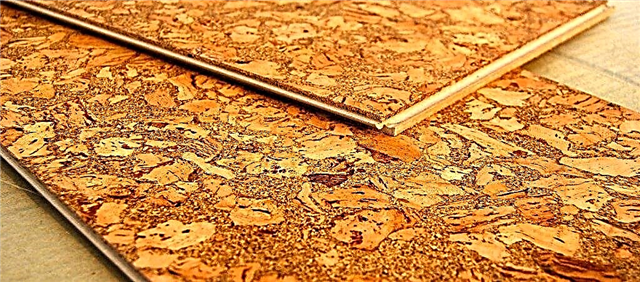
Pros of cork laminate:
- excellent heat and noise insulation,
- hypoallergenic and environmental friendly,
- the elasticity of the material
- easy installation
- can be dismantled and stacked several times,
- the cork is springy and feels warm to the touch, gives a pleasant feeling when walking barefoot,
- service life not less than 10 years.
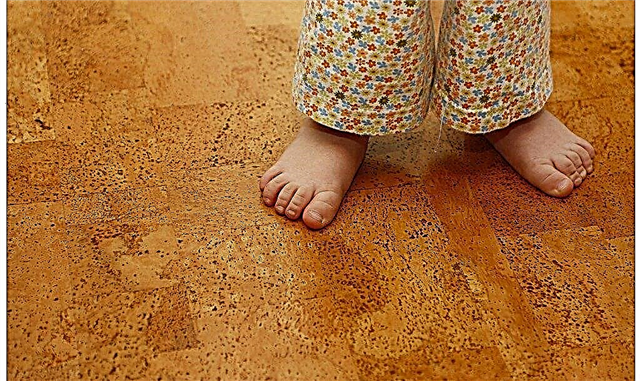
Minuses:
- high price,
- low strength under point impact,
- cork coating is poorly compatible with the underfloor heating system, heat transfer will be very low - at the level of 20%,
- rough surface makes maintenance difficult.
Some cork owners complain of socks and slippers that wear out quickly due to roughness. To eliminate this drawback, it is necessary to cover the floor with an additional layer of varnish.

Performance
- Parquet requires careful handling, does not tolerate sharp heels, furniture movements, falling heavy objects, but it is warm and unstable.
- The laminate is practical and durable, but at the same time cold, hard and static.
- The cork is elastic and the dents from the furniture disappear after a while, but when it is hit, chips will form on it. In terms of tactile sensations, this is the most pleasant and warm material.
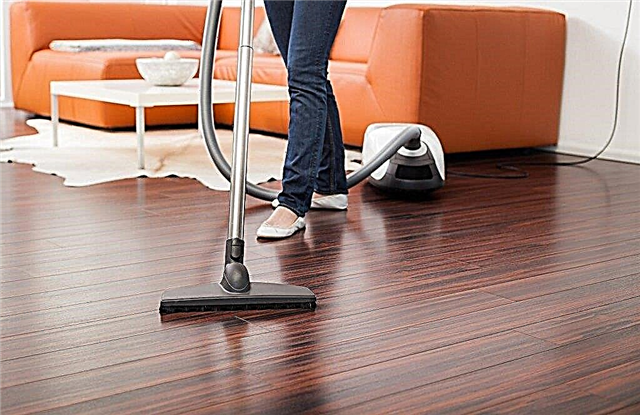
Mounting
All of the above materials can be laid floating method using a system of locks. This way of laying is simple and quick, available for hand-made execution. A parquet board is sometimes glued to the base to obtain a durable coating without gaps.
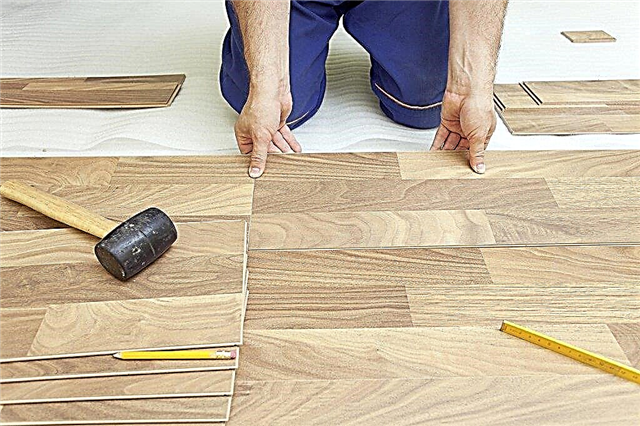
If you decide which is better to choose - parquet or laminate - from a financial point of view, then the laminate will be the most economical option, in approximately the same price category are parquet and cork laminate.
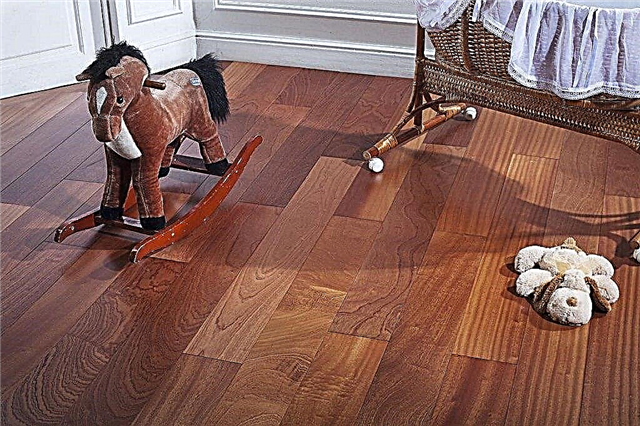
Load bearing capacity
Due to the use of durable MDF in the manufacture of the carrier layer, the laminate is able to withstand large loads from above than the board. In most cases, the first option will last much longer than the second - 20-25 years against 10-15.
The upper layer at the parquet of the species in question is made of high-strength wood species. However, under it are cheaper and less durable bars of pine. At the same time, even solid oak can be pressed by pinpoint between wood fibers. As a result, the parquet board also loses in strength to all laminated lamellas of class "33" and higher.
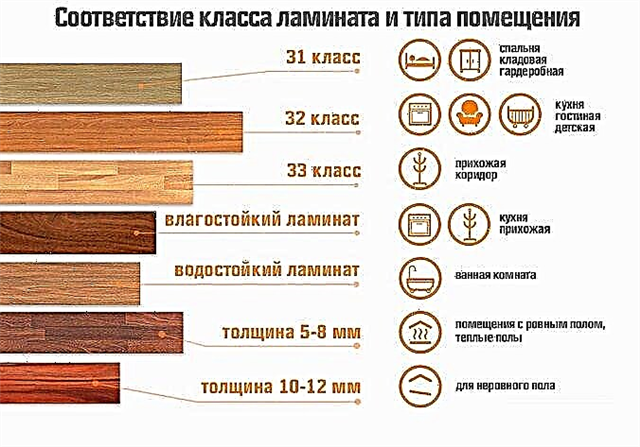
Durability
If you need a coating with the longest possible life, then choosing a laminate or parquet board, give preference to the first. Hard MDF lamellas are more durable than wood-based panels.
Plus, the outer layer on them is more wear resistant and less prone to scratches.However, if necessary, the parquet can be restored by removing the varnish and re-cycling the tree. And his counterpart in case of damage will have to be completely changed in the whole room.

Unlike laminate, a parquet board can be restored
Soundproofing
On the issue of noise and boom, a parquet board shows itself a little better than a laminate. Laminated wood due to internal porosity dampens sounds well. In this case, both coatings relate to noisy materials. If the sound insulation factor is very important, then it is recommended to choose linoleum or kavrolin for the floor.

To improve the soundproofing of the children's room, trim it with parquet board
Installation complexity
In the installation technology, the finishes under consideration have practically no differences. In both cases, a standard step-by-step instruction on laying the laminate with your own hands is suitable for work.
To lay both coatings, it will be necessary to level the base, spread the foam polyethylene backing (if the glue is not to be used) and assemble the floor cladding together from the individual elements. These individual slats are connected using end locks.
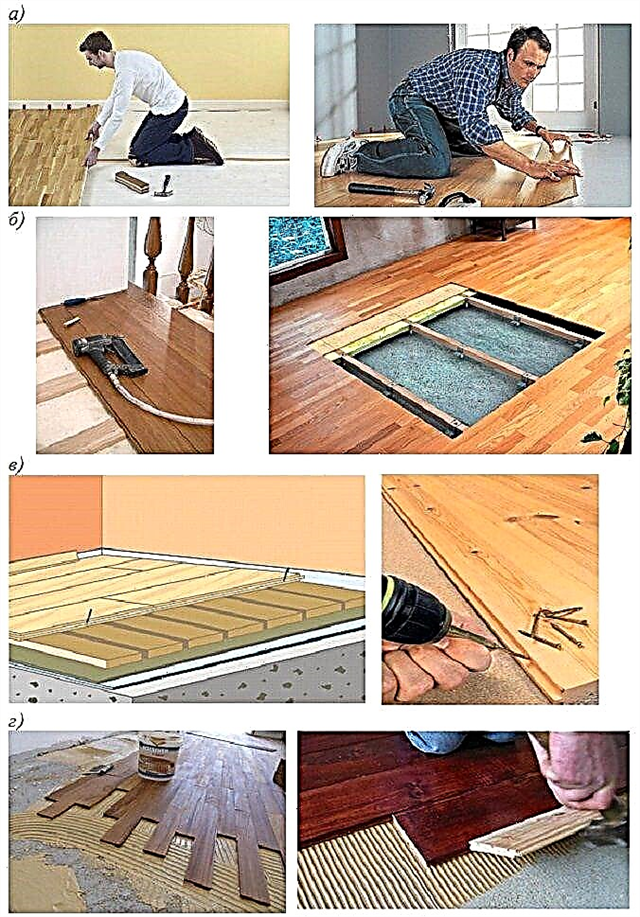
Laying a laminate and parquet board does not require special skills
A parquet board will cost more than a laminate. In the first case, the cost of a square of the floor starts from 1000 rubles / m2, and in the second from 200-300 rubles / m2. However, the price of a high-quality laminated coating with a high class of wear resistance is at least 800–900 rubles / m2. With relatively the same quality, the difference will not be very large.
Where and what is better to lay
If a warm floor is laid in the room, then the choice to "take parquet or laminate" is best done immediately in favor of the second. The board may only be placed on top of the water TP with a maximum heating temperature not exceeding 25–26 ° C. Plus, the heating of the coating should be carried out evenly over the entire area of the room. And we must remember that wood does not conduct heat well. The parquet floor will warm up for a very long time.
Aesthetic flooring is ideal for offices, as well as living rooms, libraries and halls in private homes. In the bedrooms, corridors and nurseries, it is best to lay the laminate. And for bathrooms, kitchens and balconies, its moisture resistant version is more suitable. It is not necessary to take a parquet board in rooms that are cold and with high humidity.

Parquet board in the interior
Myths about parquet and laminate
Both coatings in question appeared on the Russian market not so long ago. There are quite a lot of myths and myths around them. And the two main issues that constantly arise among buyers are the environmental friendliness and maintainability of these floor finishes.
Laminate is an artificial material. However, if this is not a cheap fake, then it does not emit formaldehyde and anything else and is completely safe. It is impossible to call it natural and natural, like wood. But to lay emphasis on the artificiality or harmfulness to human health of a laminated coating is also impossible.
In terms of maintainability, parquet competes greatly. However, in order to carry out such repairs, it is necessary to have special skills in working with wood.
And the situation with the laminate is also not so clear. It is not possible to laminate the worn out floor area on its own. But if only one lamella was left in reserve, then it is quite possible to put it instead of any worn one. The shade of such a replacement will be slightly different, especially if the finish lay under the sun in the room for many months. But repair is possible, the main thing is not to use glue during installation initially.
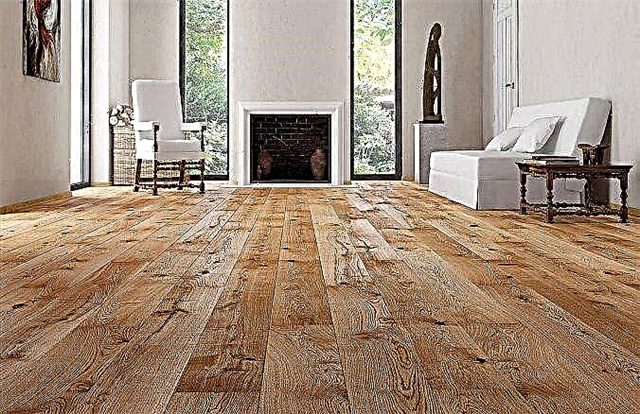
When choosing between a parquet board and a laminate, consider many factors
Output
Before choosing a laminate or parquet board in your home, you should think carefully. The reviews for both finishes are very mixed. The parquet is beautiful and luxurious, but the laminated coating outperforms it in terms of wear resistance and durability. Plus, far from every room, these options are generally suitable. In the bathrooms, bathrooms and kitchens, it is worth picking up something more moisture resistant.
Briefly about the advantages and disadvantages of laminate flooring
The feature of the laminated coating is its multilayer. The layers are wood fiber boards and kraft paper, which are connected by polymers. Protection is applied to the decorative top layer, which is based on melamine resin. Due to this layer, this flooring is particularly durable.
Thanks to the fiberboard layer, the laminate acquires constant geometrical dimensions, as well as the ability to withstand climatic variations. Under the fiberboard there is another layer, which consists of either plastic or special paper impregnated with a special resin. To increase the moisture resistance, the edges of the material are treated with wax-containing impregnation.
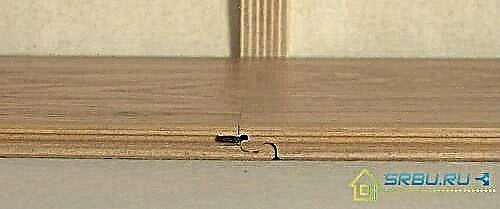
The end view of the laminate.
Laminate flooring differs in the loads that it is able to take on. It can withstand small, medium and high loads, as evidenced by the corresponding marking. What type of flooring to lay, first of all, depends on what cross-country capacity. In the kitchen, for example, the load on the floor will be high, and in the nursery it will be medium. Light loads will be in the sleeping room.
+ We list the advantages of laminate flooring:
- It does not attract dust.
- It easily withstands impacts and is slowly erased. The most durable is the coating of classes 31, 32 and 33, which is intended for industrial and office premises. For the apartment, you can use a laminate of classes 21, 22 and 23.
- The laminate floor will not be damaged, even if subjected to prolonged compression.
- Laminate is not afraid of sunlight, not fading from time to time. It is also heat-resistant and does not come in contact with cleaning chemicals.
- Laminate flooring is suitable for arranging a warm floor.
- Patterns, textures and colors of the laminate shine with variety.
- The warranty on this material is from 5 years.
- Laminate care is extremely simple.
- The disadvantages of the laminated coating are also available:
- In rooms where it is too wet, this material is not recommended.
- If you do not use a substrate, then the insulation of such a floor from external noise will be very weak.
- The laminate is not subject to repair. If it is damaged, then nothing can be fixed - only change.
- The appearance of the laminate betrays that it is an artificial material.
About a parquet board, its advantages and disadvantages
And now we need to talk about parquet - otherwise, how do we find out how a laminate differs from a parquet board. Each parquet board, like a laminate, consists of several layers. Naturally, these layers have a completely different composition. Inside the multilayer structure - planks glued to each other perpendicularly. This allows the parquet to serve for many years without wiping and without deteriorating from bumps and other loads.
We list in detail what a parquet board consists of. Let's start from above. So, to protect against external influences, a special varnish is applied with the upper layer (or rather, several layers).
Next come the valuable woods. It can be oak, beech or ash, for example. The thickness of this layer is small - from 2.2 to 6 millimeters.
Lamels, otherwise, narrow boards made of spruce or pine make up the central layer of parquet. They have a side groove-type mount for connecting to an adjacent board. This layer is perpendicular to the previous one.
As the lowest layer, which serves for the stability of the structure, plywood is used from spruce or pine, from 1 to 2 millimeters thick. Its fibers are located in the same way as the fibers of valuable species of wood in the outer layer.
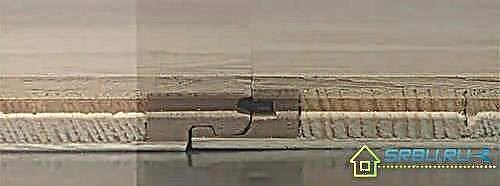
Parquet board from the end.
+ Now note the advantages of parquet:
- This coating protects against external noise very well, as it is made of natural wood. Also, it does not attract dust.
- Varnish, which is applied under production conditions, is very durable and harmless. It has no toxic formaldehyde.
- Parquet can be polished and restored many times. The thicker its upper layer, the greater the number of times this can be done. But it is very difficult to find a master who will take up this work.
- The appearance of the parquet board does not compare with anything - it looks elegant and stylish. The texture of natural wood has a unique beauty.
- It’s easy to lay a parquet board; caring for it is also simple.
- The manufacturer gives a guarantee for this material for 10 years, no less.
- The disadvantages of the parquet board are few, but they also have:
- You cannot lay parquet in a bathroom or other room with high humidity - it does not tolerate moisture.
- Parquet varnish erases faster than the top protective coating on the laminate.
- Parquet requires more careful adherence to the indoor microclimate than a laminate.
The ability to withstand fluctuations in temperature and humidity
Parquet does not like either too dry air (it is drying up), or too humid rooms (swelling). But the laminate floor perfectly transfers both. Therefore, in the winter, during the heating season, when it is very dry in the rooms, small gaps may occur between tightly fitting boards. Laminate will not react like that - that's a plus for him.
Laminate was created in order to get a floor covering imitating parquet, but devoid of its shortcomings. Therefore, initially this type of coating was even more expensive than parquet. Then new technologies appeared, production reached the mass level, and the laminate became cheaper.
If we talk about the laminate of classes 31, 32, 33, 34, popular today, then they are much superior to parquet. The fact is that they use a high-density fiberboard (HDF), which expands slowly and evenly. Therefore, there are no gaps in such a floor covering.
Product face
Needless to say - noble and stylish parquet wins by this parameter. If your room is decorated in a classic style, then it just asks for a parquet board. It will look great next to a marble fireplace, gilding and stucco, in harmony with paintings on the walls and antique furniture.
If the apartment is decorated in one of the modern styles (modern, high-tech, eco-style), then in it is the place for the laminate floor. It has so many drawings, colors, textures and patterns that you can always choose the one suitable for the chosen design.
Floor Care
If the floor is to be laid not in an apartment, but in a public building, it is especially important how difficult it is to take care of it. Here, when choosing a parquet board vs a laminate, you should know that a laminated coating can be washed with a damp cloth at least every day. But pouring a bucket of water on it to do a thorough cleaning is not necessary. The use of powder and detergents is not recommended.
Parquet is more tender - it can be vacuumed, only carefully so as not to scratch. Wipe it with a well-wrung rag, in addition, you should periodically use special compounds for caring for the tree.
Product price
Everyone believes that parquet is more expensive than laminate, taking it for an axiom. Although this is not entirely true. It is also important who produced this material. And even more important, from which components it is made. Much depends on the class of the laminate. The stronger its coating, the more expensive it is. So an excellent high-quality laminate may well cost more than an average price parquet.
Parquet board can also vary greatly in price. After all, it has a different top varnish layer and thickness. Much depends on the type of wood from which it is made. If on the parquet there are knots, variegated drawings, then it will not be expensive. But if it is a world-brand product made of excellent wood without a single speck, then the price of such parquet can be very high.
Comparison table of the main characteristics of the laminate and floorboard
| Parameters | Laminate | Parquet board |
|---|---|---|
| Wear resistance | + | - |
| Climatic fluctuations | + | - |
| Appearance | - | + |
| Care | + - | - |
| Durability | - | + |
The truth about parquet and laminate - expose?
Many sellers distort information trying to sell their product. Let us expose these statements, which may be heard by many.
1. So, you can often hear that the only eco-friendly material of these two is parquet. This is a lie - according to European standards, the laminated coating has the same environmental class as parquet - E1. As we considered at the beginning of this article, a parquet board consists of layers of wood, and these layers are glued together with special adhesives. Therefore, it was not without chemistry at all.
2. The fact that the laminate, unlike parquet, is more echoing, is also a false statement. It depends on the substrate and how well the floor base is aligned. After all, only having achieved a perfect fit of the coating to the base, you can achieve a minimum echo. By applying a cork backing, a better sound insulation effect can be achieved. Then it doesn’t matter what is on top - parquet or laminate - there will be no deafness. And vice versa.
3. As an argument that a parquet board is better than a laminate, there is an assertion that a laminated coating, unlike a parquet board, cannot be repaired. It would seem that everything is true. But in practice it turns out that this is a marketing move and there are several nuances. The thing is that it is very difficult to find a master who agrees to restore parquet that is not glued to the base.
During grinding, the board may bend slightly at the joints, and this is fraught with the appearance of waviness. And grinding erases the color and removes brushing, after which the parquet will look too cheap.
Humidity
Wood is a “breathing” material that reacts to changes in humidity and air temperature. Therefore, parquet should be installed where the humidity level is controlled and maintained at the level of 45-55% for massive and 45-65% for engineering and parquet boards.
Despite the fact that the parquet board has excellent stability, most manufacturers of wooden floors do not recommend installing them in bathrooms or in the kitchen - places where temperature and humidity can fluctuate significantly.
Laminate floors are highly resistant to moisture and are often used for kitchens, bathrooms and basements. However, it is important to carefully read the manufacturer's warranty and recommendations to avoid costly mistakes.
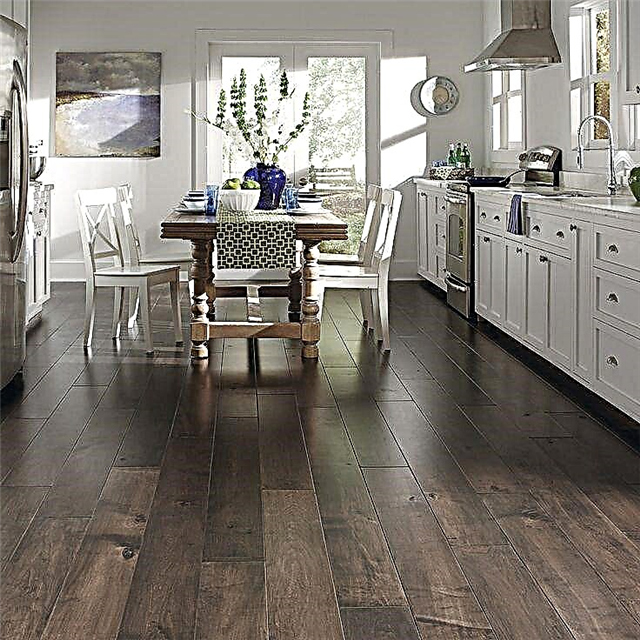
High-quality laminate can be laid in the kitchen and other rooms with frequent fluctuations in humidity
Repairs
Individual fragments of the laminate can only be replaced if it was laid in a floating way by means of a lock connection of the slats. If glue was used in the installation, replacing the damaged laminate strip will be very problematic.
In this case, even if you manage to find the same type of laminate that was installed, a new bar can stand out from the rest due to fading and wear of the latter. Laminate cannot be sanded and laminated.
Parquet board is easier to repair (although you need to understand that this is an expensive enterprise). If the damage is extensive, the parquet can be completely sanded and then varnished or oiled. If the damage is localized, individual boards can be replaced. Hand-scrapping technology can be applied to the parquet, creating a very beautiful floor with an aging effect.
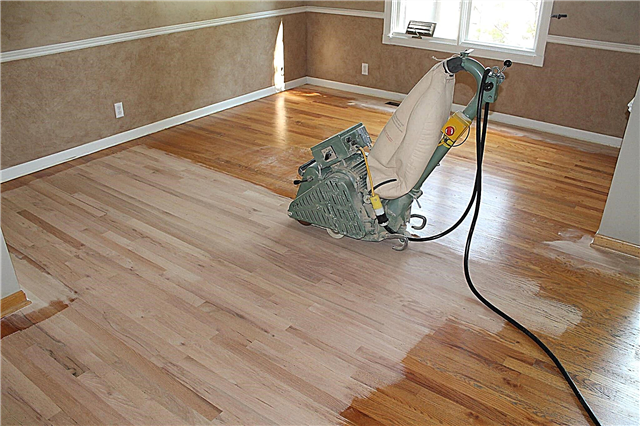
Old parquet can be sanded and repainted with varnish or oil.
Easy care
It is easy to care for the laminate: it is enough to sweep it regularly, clean it from dirt in a timely manner and wipe it with a damp cloth. Natural floor care requires a little more care. It is necessary to carry out cleaning by adding special products for parquet to the water. They restore oil or varnish finish.
It is better to avoid universal cleaners, their use usually deprives all the manufacturer's guarantees on the integrity of the protective coating.
Most parquet floors have excellent resistance to Coca-Cola, red wine and many household chemicals. However, in order to preserve the beauty of the floor for many years, it is important to quickly eliminate any impurities and regularly clean the floor.
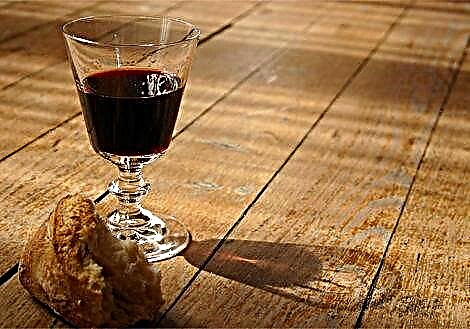
There should always be a glass between parquet and red wine.

